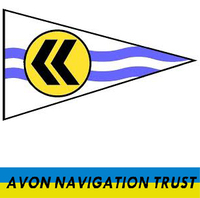


Local Sponsors
-
Avon Navigation Trust
Mill Wharf, Mill Lane Wyre Piddle WR10 2JF
The navigable river Avon runs from Alveston Weir above Stratford-upon Avon, for 47 miles, winding it's way through the Warwickshire, Worcestershire, and Gloucestershire countryside, down to Tewkesbury where it joins the river Severn.
More information
Many thanks to The Avon Navigation Trust for facilitating this camera's location and capitally funding its installation. Tewkesbury is a town situated in Gloucestershire, strategically located at the confluence of the River Severn, the River Avon, and several smaller tributaries, including the Swilgate and Carrant Brook. The presence of these rivers posed significant challenges to land transportation, and the town's proximity to crossing points, particularly the Avon but also the Swilgate and other streams, played a role in its growth. The Avon served as the primary river crossing along the ancient route running along the left bank of the Severn. Legend has it that King John was responsible for the construction of the bridge over the Avon, and in 1205, the bailiff of Tewkesbury was granted two oaks for the purpose of building a bridge. The earliest accounts of this tradition suggest that John built the bridge before ascending to the throne. The name "King John's Bridge" did not gain popularity until the 19th century; previously, it was referred to as the Long Bridge or, during the Middle Ages, the bridge leading to Mythe. It might have also been called the Wide Bridge, after a resident of the town in 1321. Once the Mill Avon was created, there were two bridges, and the roadway between them and beyond underwent changes, alternating between a land bridge and a solid causeway. According to Leland, King John granted the tolls from the Wednesday and Saturday markets to the town for bridge repairs, which were neglected. In 1368, the town acknowledged its responsibility for repairing the bridge, particularly the broken northern part. In 1530, all tenants of the Mythe were obliged to contribute to the bridge's repair. An unsuccessful attempt was made in 1621 to transfer responsibility for the bridge to the county. In 1638, the county raised funds for repairs with the understanding that the town would be responsible for future maintenance. The town managed the bridge until 1891 when, following disputes between the town and county, the county assumed responsibility for it as a county bridge. In the early 16th century, the bridge consisted of a series of stone arches spanning both branches of the Avon, with an extension crossing the Avon Ham on a wooden structure. The bridge underwent repairs in 1407, 1588, 1639, and 1650. The repairs in 1639 were substantial and likely involved filling in the arches between the two branches of the Avon, as there were two distinct stone bridges by 1675, one with three and the other with two stone arches. In 1710, the bridge was repaired, and in 1747, following damage caused by strong river currents, the arches over the Old Avon were replaced, and three wooden spans next to the Avon (likely the land bridge) were substituted with four brick arches. In 1756, the bridge was widened, and in 1810, the causeway beyond the Old Avon was also widened and raised. In 1824, the entire roadway was elevated. In 1836, a footpath on cantilevered iron brackets was added to widen the bridge over the Old Avon. As it stood in the early 20th century, the bridge was a mix of stone and brick arches on stone piers, featuring brick parapets, an iron sidewalk, and a narrow roadway in some sections, measuring only 16 feet wide. The entire structure was reconstructed using stone and concrete, doubling the width on the south side, while retaining some of the original elements. In 1962, it was reopened as two separate bridges: King John's Bridge over the Mill Avon and Beaufort Bridge over the Old Avon.

